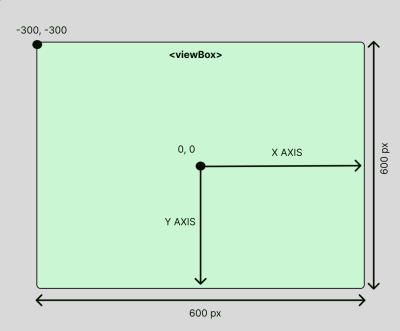So, I esteem drawing birds with code. Inspired by my brother’s admire for birdwatching, I love the strong point of their feathers, colors, and sounds. But what I scrutinize most is the manner their bodies curve and a quantity of birds can bag dramatically a quantity of curves! So, I took my admire for drawing with SVG graphics and frail it to experiment with chicken shapes. Over time, I’ve drawn enough to alter into incredibly adept at working with arc shapes.

Listed below are about a of my contemporary works. Inspired by designs I got here all over on Dribbble, I created my versions with code. That it is advisable to presumably browse thru the code for each on my CodePen.
But sooner than we dive into creating curves with arcs, please close here and look at out Myriam Frisano’s contemporary article, “SVG Coding Examples: Critical Recipes For Writing Vectors By Hand.” It’s an magnificent primer to the SVG syntax and this will come up with accurate context heading into the ideas we’re holding here by manner of mastering SVG arcs.
A Swiftly SVG Refresher
You in all likelihood know that SVGs are crisp, infinitely scalable illustrations without pixelated degradation — vectors for the salvage! What which that it is advisable to not know is that few builders write SVG code. Why? Effectively, the syntax appears to be like to be like advanced and routine compared to, jabber, HTML. But belief me, when you destroy it down, it’s not simplest doable to hand-code SVG however also somewhat somewhat of stress-free.
Let’s make certain that you simply’re as much as speed on the SVG viewBox since it’s a key belief by manner of the scalable half of *SVG. We’ll spend the analogy of a digicam, lens, and canvas to point to this belief. Imagine your browser window as a digicam and the SVG viewBox as the digicam lens specializing within the painting of a chicken you’ve created (the SVG). Imagine the painting on a smartly-organized canvas that will stretch some distance beyond what the digicam captures. The viewBox defines which half of this canvas is visible thru the digicam.

Let’s jabber we bag now an SVG component that we’re sizing at 600px sq. with width and height attributes without delay on the component.
Let’s flip our consideration to the viewBox attribute:
The viewBox attribute defines the interior coordinate plan for the SVG, with four values mapping to the SVG’s x, y, width, and height in that divulge.
Here’s how this relates to our analogy:
- Camera Space and Dimension
The-300, -300represents the digicam lens’ left and top edge insist. In the intervening time,600 x 600is esteem the digicam’s frame dimension, exhibiting a explicit fragment of that house. - Unchanging Canvas Dimension
Changing thexandyvalues adjusts the build the digicam points, andwidthandheightgovern how noteworthy of the canvas it frames. It doesn’t resize the accurate canvas (the SVG component itself, which remains at600×600pixels). No matter the build the digicam is positioned or zoomed, the canvas itself remains mounted.
So, even as you adjust the viewBox coordinates, you’re simply deciding on a brand unique discipline of the canvas to focal point on without resizing the canvas itself. This permits you to govern the visible discipline without changing the SVG’s accurate veil dimensions.

You now bag the context you’ll need to be taught to work with
The
We bag an component. And we’re viewing the component’s contents thru the “lens” of a viewBox.
A
With a single
Here’s a transient, no-frills instance that areas a instance we regarded at earlier:
fill="transparent" stroke="black" stroke-width="24" />
Be taught about the Pen [Arc path animation [forked]](https://codepen.io/smashingmag/pen/bNbeQQy) by akshaygpt.
Now, I get it. Taking a behold at that string of numbers for the first time is esteem staring into the Matrix, fair exact? But when you get the hold of it, you’ll seek that arcs aren’t as frightening as they behold.
Let’s destroy down the
M 0 0strikes the scamper to the center of theviewBoxhowever doesn’t if truth be told “diagram” one thing else horny yet.A 100 100 0 1 1 200 0attracts an arc with a radius of100in both the X and Y axes, ending at(200, 0).
That it is advisable to presumably visualize the coordinate positions in red resulting from a quantity of M instructions within the following demo:
Be taught about the Pen[ArcProbabilitiesb/w2points[ArcPossibilitiesb/w2points[forked]](https://codepen.io/smashingmag/pen/EaYyOGW) by akshaygpt.
Be taught about that? We bag two points along the X-axis which could very smartly be relative to the viewBox’s center, and a crooked line connects them. Now, know that the numbers in an M say are setting coordinates, and the numbers in an A say diagram a line along the SVG’s axes. You horny drew a curve in SVG!
Dissecting An Arc
We can zoom into the M and A instructions even further to raised designate what’s going on.
First off, we’re working with an arc, or extra precisely, an elliptical arc, which is a crooked line. We know that a supreme circle is merely an ellipse with equal radii in both the X and Y directions. We can switch the form of the circle by giving it a quantity of, unmatching radii values.
Here's what we all know up to now:
M0: Coordinate along the X-axis.0: Coordinate along the Y-axis.
A100: Radius tag within the X route.100: Radius tag within the Y route.200: The arc’s endpoint within the X-route.0: The arc’s endpoint within the Y-route.
There are three values within the A say that we salvage of skipped. These are esteem “switches” within the sense that they are Boolean values that enable or disable obvious issues about the arc.
0: Rotates the arc along the X-axis.1: Determines whether or not here's a “small” arc (0) with a span higher than 180° or a “smartly-organized” arc (1) with a span higher than 180°.1: Gadgets whether or not the arc “sweeps” in a clockwise route or a counter-clockwise route, the build0equals clockwise and1equals counter-clockwise.
If we rob this knowledge and re-write the
Presumably we are able to simplify that somewhat the spend of abbreviations:

Let’s rob this knowledge and launch taking half in with values to behold the diagram in which it behaves.
Visualizing The Probabilities
All over again, if here's the
Then, we are able to manipulate it in myriad techniques. Mathematically speaking, which that it is advisable to create an endless collection of arcs between any two points by adjusting the parameters. Listed below are about a diversifications of an arc that we get when all we manufacture is switch the arc’s endpoints within the X (
Be taught about the Pen[ArcProbabilitiesb/w2points[ArcPossibilitiesb/w2points[forked]](https://codepen.io/smashingmag/pen/WbexYLV) by akshaygpt.
Or, let’s administration the arc’s width and height by updating its radius within the X route (
Be taught about the Pen[Rx[Rx[forked]](https://codepen.io/smashingmag/pen/xbKOQMr) by akshaygpt.
In the same diagram, we are able to manipulate the arc’s width by updating the
Be taught about the Pen[Ry[Ry[forked]](https://codepen.io/smashingmag/pen/mybEQvG) by akshaygpt.
Let’s seek what occurs when we rotate the arc along its X-axis (
Be taught about the Pen[x-axis-rotation[x-axis-rotation[forked]](https://codepen.io/smashingmag/pen/VYZjVRx) by akshaygpt.
Even with a attach build of endpoints and radii (
Be taught about the Pen[4circumstances[4cases[forked]](https://codepen.io/smashingmag/pen/wBwWQOb) by akshaygpt.
And lastly, adjusting the arc’s endpoint along the X (
Be taught about the Pen[endxendy[endxendy[forked]](https://codepen.io/smashingmag/pen/xbKOQeL) by akshaygpt.
Wrapping Up
And there you bag it, SVG arcs demystified! Whether or not you’re manipulating radii, rotation, or arc route, you now bag the full tools to grasp these lovely curves. With discover, arcs will change into horny yet any other half of your SVG toolkit, person that offers you the flexibility to create extra dynamic, intricate designs with self assurance.
So bag taking half in, bag experimenting, and quickly you’ll be bending arcs esteem a pro — making your SVGs not horny functional however beautifully inventive. Must you enjoyed this dive into arcs, drop a esteem or allotment it along with your mates. Let’s bag pushing the boundaries of what SVG can manufacture!
(gg, yk)






